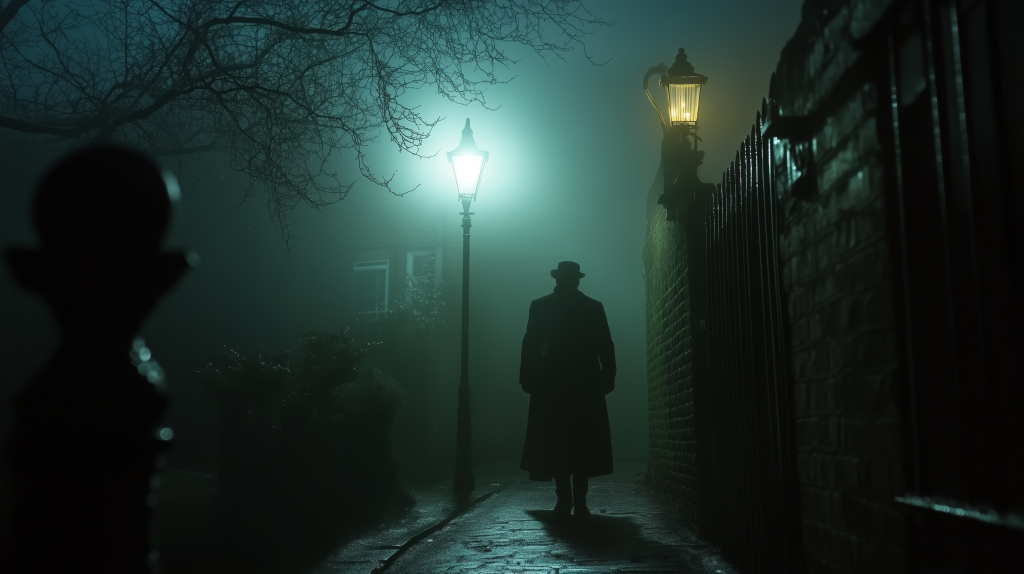
A historian believes he has finally identified the notorious serial killer known as Jack the Ripper—one of history’s most elusive criminals.
In a recent interview with Australia’s Today show, historian Russell Edwards revealed the name of the alleged killer—a suspect who has long been at the center of speculation.
Who Was Jack the Ripper?
Jack the Ripper terrorized London’s impoverished Whitechapel district in 1888, brutally murdering five women over a span of just nine weeks.
According to The Mirror, the victims—Mary Ann Nichols, Annie Chapman, Elizabeth Stride, Catherine Eddowes, and Mary Jane Kelly—were all killed in a gruesome manner. Each had their throats slit, while Chapman, Eddowes, and Kelly were also found with severe post-mortem mutilations, including the removal of internal organs.
The killings shocked Victorian-era society, sparking widespread fear and inspiring countless theories, books, and films. The murderer’s chilling moniker originated from a letter sent to London’s Central News Agency, signed “Jack the Ripper.”
Has Jack the Ripper’s Identity Finally Been Revealed?
Edwards, a seasoned researcher and author of two books on the case, claims the killer was Aaron Kosminski, a Polish immigrant and barber who had been a prime suspect for years.
At the time of the murders, Kosminski was 23 years old. He later spent 28 years in a mental institution, diagnosed with schizophrenia, before his death in 1919.
Historical records suggest that investigators suspected Kosminski early on. A police report from 1894, cited by The Mirror, described him as having a “great hatred of women, especially of the prostitute class,” as well as “strong homicidal tendencies.”
Controversy Surrounding the Investigation
While contemporary police reports assumed all the victims were prostitutes, this claim has never been fully substantiated.
According to Penguin Books, many of the women were likely homeless rather than sex workers. “Three of the women frequently slept on the streets, and on the nights they were killed, they couldn’t afford a lodging house,” the publisher noted.
Coroner reports indicated that all the victims were murdered in reclining positions, with no signs of struggle. Despite this, investigators at the time clung to the belief that the women had been lured for sex before being killed, a theory eagerly perpetuated by newspapers seeking sensational headlines.
The DNA Breakthrough That May Solve the Mystery
More than a century after the crimes, Edwards claims to have uncovered forensic evidence linking Kosminski to the murders.
He purchased a blood-stained shawl believed to have been left at one of the crime scenes and subjected it to DNA testing. Analysis reportedly revealed a match between a semen sample on the fabric and a living descendant of Kosminski’s sister.
While Edwards initially published his findings in 2014, his conclusions were met with skepticism. Many geneticists argued that a lack of transparency in the DNA analysis made it impossible to verify his claims.
However, further testing—including a DNA sample from Kosminski’s great-great-grandniece—has strengthened Edwards’ case. Additionally, he suggests that Kosminski had connections to the secretive Freemasons, which may have influenced both his motives and his ability to evade capture.
Could the Case Finally Be Closed?
Edwards, along with descendants of the victims, is now petitioning Britain’s High Court to hold an official inquest that would formally name Kosminski as Jack the Ripper.
Karen Miller, the great-great-great-granddaughter of Catherine Eddowes, believes an official ruling would bring long-overdue justice to the victims.
“For so long, the focus has been on the mystery and the killer’s infamous name,” Miller told The Daily Mail. “But what about the victims? Having the real person legally named in a court that can assess all the evidence would be a form of justice. It would mean so much—not just to me, but to many people—to finally have this crime solved.”
The Final Verdict?
More than 135 years after the Whitechapel murders, the case of Jack the Ripper remains one of the most infamous unsolved crimes in history. Whether the British courts will take up Edwards’ case—and whether the evidence will hold up to legal scrutiny—remains to be seen.
One thing is certain: the legend of Jack the Ripper continues to captivate the world, and the pursuit of truth is far from over.




